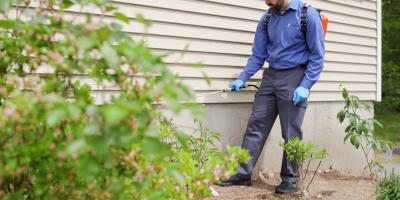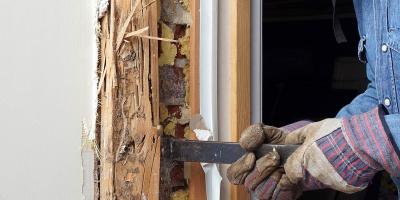Identifying Common Flies In Your Home Or Business

The methods for preventing and removing flies from your home or business can depend on the species present. In order to effectively eliminate flies from your facility, it helps to familiarize yourself with the specific types of flies that commonly infest your type of business. Each species of fly has unique preferences for selecting breeding sites and food sources. Knowing the type of fly plaguing your home or business allows you to remove specific pests effectively and efficiently.
Blow Flies
Blow flies, sometimes called bottle flies, prefer to lay their eggs in rotting material. Blow flies’ larvae can manifest inside dead rodents that are caught inside walls or traps. These flies have a shiny abdomen that looks metallic, and feed on most items that humans consider filthy, such as animal waste. They are able to locate a food source from a mile away, and therefore regular sanitation practices are very important to ensure the elimination of these insects.
Drain Flies
Drain flies are often called moth flies because of the similarities in appearance. They are also called sewage or filter flies because they frequently breed in areas with raw sewage. Drain flies prefer places with broken pipes and standing water, and are identified by their long, fluffy hairs. They need standing water in order to breed, so eliminating leaks can prevent them from affecting your home or business. Instead of flying, they prefer to crawl on damp surfaces, like clogged roof gutters or drains.
Gnats
Gnats like to make their homes in office plants and houseplants, laying their eggs in the soil. Contrary to popular belief, these tiny winged insects are adults Typically, gnats feed on plants, other insects, and blood. Fungus gnats (pictured) are considered more of a nuisance than anything in their adult form. Larvae on the other hand, can damage plant root and stunt the growth of your houseplants if present in large numbers. If you see several gnats flying about in your building, you may have an infestation.
Common Houseflies
Houseflies are the most common type of pest in many areas. They spread viruses, bacteria, and fungi onto surfaces when they land. This can lead to numerous diseases. They may also transmit disease by regurgitating while feeding. You can identify houseflies by the four stripes that run lengthwise along the thorax. Houseflies have a varied diet: adult house flies prefer human food, and larvae prefer excrement.
Phorid Flies
Phorid flies are most common in restaurants or hospitals. They breed within decaying organic matter. They prefer areas with moisture, such as at the bottom of a garbage can, in backed-up drains, under kitchen appliances, in overwatered plants, and in dirty mop heads. They are ¼ inch in length and have a humped back. You can tell these flies apart from fruit flies by their behavior. Unlike fruit flies, phorid flies will run along the surface of objects on which they have landed.
Fruit Flies
Fruit flies — as the name implies — like to lay their eggs next to decaying organic material, such as fruits and vegetables. You will find fruit flies by floor drains and trash cans. They are typically ⅛ of an inch in length. There are many types of fruit or vinegar flies. Drosophila replete, the black-eyed fruit fly, is a likely culprit for year-long infestations. And bars and pubs are susceptible to fruit flies due to the presence of liquor bottles and garnish stations.
If you need assistance with identifying or eliminating flies from your home or business, the professionals at JP Pest Services can help. Our service professionals understand the specific requirements to keep New England homes and businesses free from unwanted pests and are dedicated to solving your pest problems. Contact JP Pest Services to request a free residential estimate or a free commercial consultation today.



